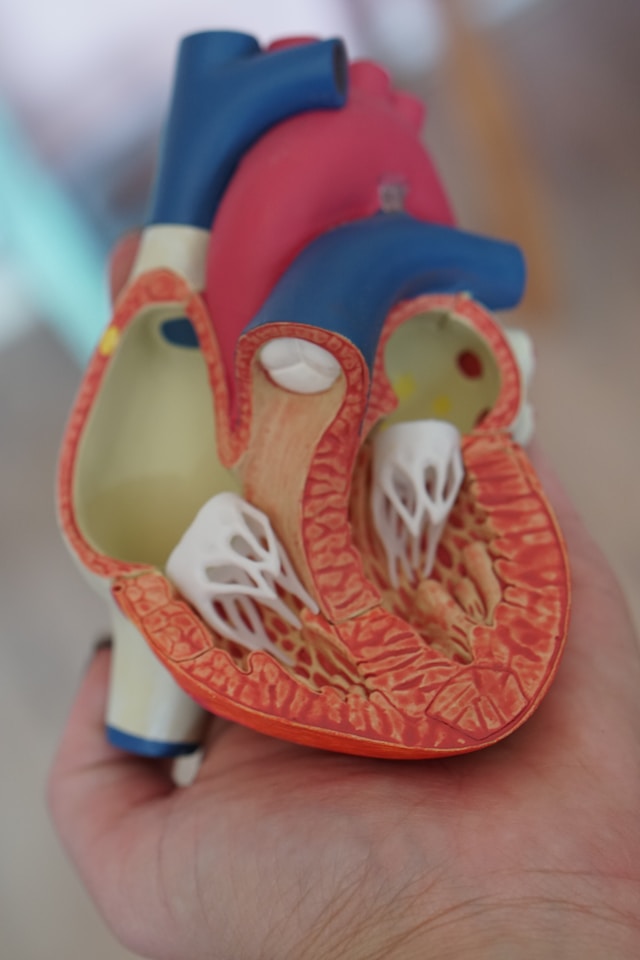Digoxin is a cardiac glycoside medication that has been used for centuries to treat cardiac problems like heart failure and atrial fibrillation, the most common type of abnormal heart rhythm. But despite its utility, various factors can cause digoxin toxicity, a potentially fatal condition caused when concentrations in the body exceed healthy therapeutic levels. This article will give a basic overview of the drug, as well as the causes, symptoms and treatments of digoxin toxicity.
What Is Digoxin?
Digoxin is a cardiac glycoside extracted from the leaves of the foxglove plant (Digitalis lanata). It is primarily used to treat heart failure and certain types of irregular heart rhythms, mainly atrial fibrillation. Digoxin works by increasing the force of heart muscle contractions as well as slowing the heart rate.
Digoxin is considered a high-risk drug due to its narrow therapeutic range and high likelihood of drug-to-drug interactions. Therefore, medical providers must take extra precaution when assessing patient medical histories, particularly with medications. In recent years, digoxin has been replaced with lower risk alternatives that have wider therapeutic ranges and less drug interactions. Nevertheless, digoxin still has a role in some scenarios.
How Does Digoxin Work?
Digoxin’s primary mechanism of action involves inhibiting the sodium-potassium adenosine triphosphatase (Na+/K+ ATPase) pump in cardiac myocytes. This inhibition leads to several effects:
- Increased intracellular sodium: By blocking the Na+/K+ ATPase pump, digoxin causes sodium to accumulate inside cardiac cells.
- Enhanced calcium influx: The increased intracellular sodium concentration promotes the activity of the sodium-calcium exchanger, leading to increased intracellular calcium levels.
- Stronger cardiac contractions: Higher intracellular calcium concentrations result in stronger heart muscle contractions, improving the heart’s pumping efficiency. Digoxin also affects the electrical conduction system of the heart. The increase in vagal activity that it causes, slows conduction in the atrioventricular (AV) node. This effect leads to a slower heart rate.
What Is The Therapeutic Range For Digoxin?
For patients on digoxin therapy, the therapeutic range is narrow and difficult to determine, however, a generally accepted range is between 0.5 ng/mL to 0.9 ng/mL. Concentrations below 0.5 ng/mL may be ineffective, while levels above 0.9 ng/mL increase the risk of toxicity1. The lowest effective dose should be administered especially to expectant mothers, since digoxin could cause uterine contractions and cause a miscarriage. In fact, digoxin is one of the substances commonly used during abortions to purposefully terminate pregnancies.
What Causes Digoxin Toxicity?
When digoxin levels exceed therapeutic levels, it can cause digoxin toxicity. According to an analysis of 19 studies involving more than 500,000 patients, spanning from 1960-2014, patients taking digoxin to control atrial fibrillation faced a 27% higher risk of death than those who are not taking it2.
High digoxin levels can be due to:
- Overdose: Accidental or intentional ingestion of excessive amounts of digoxin.
- Decreased clearance: Impaired kidney function or certain medications that reduce digoxin elimination.
- Drug interactions: Medications that increase digoxin absorption or decrease its clearance.
- Dehydration: Can lead to increased concentration of digoxin in the blood.
- Sample collection timing: Drawing blood too soon after dose administration will cause falsely elevated results. Instead, samples should be drawn 6 to 8 hours after the last dose.
- Interference: Certain substances in the blood that can interfere with the assay, leading to falsely elevated results.
Digoxin Toxicity Symptoms
Symptoms of digoxin toxicity can be categorized into three main groups:
1. Cardiac symptoms:
- Arrhythmias (e.g., bradycardia, atrial tachycardia with block, ventricular tachycardia)
- Conduction disturbances
- Cardiac arrest
2. Gastrointestinal symptoms:
- Severe nausea and vomiting
- Abdominal pain
- Anorexia
3. Neurological symptoms:
- Confusion
- Delirium
- Visual disturbances like the appearance of yellow halos around lights, called xanthopsia, and altered color vision called chromatopsia. This may have influenced the work of painter Vincent Van Gogh in paintings such as “The Starry Night,” since he reportedly used foxglove for the treatment of his ‘dropsy,’ an old term for edema due to CHF3.
- Weakness
- Fatigue It’s important to note that digoxin toxicity can sometimes present with nonspecific symptoms, making identification more challenging. Therefore, maintaining a high index of suspicion and confirmation with digoxin lab testing is important.
What Is The Treatment For Digoxin Toxicity?
Activated charcoal is often used in the treatment of non-life-threatening digoxin toxicity. The use of activated charcoal can lead to a 30% to 40% drop in digoxin levels within 12 to 18 hours4.
For more life-threatening digoxin levels the primary treatment is the administration of digoxin-specific antibody fragments, or digoxin immune Fab. The two products currently available in the U.S. market are Digibind and DigiFab and are collected from sheep5.
Digoxin molecules bind to these antibody fragments, making them unavailable for binding to their receptors. The digoxin-antibody complexes are then eliminated through the kidneys.
For both brands of digoxin immune Fab, one vial of the product will bind approximately 0.5 mg of digoxin. Therefore, the dose of digoxin immune Fab is based on the amount of excess digoxin believed to be present in the patient. In some cases, this amount may be unknown.
If the entire dose of digoxin immune Fab is given at one time, it may be eliminated from the body before its had a chance to bind to the digoxin which is located in deeper tissue stores. For this reason, it has been recommended that half of the necessary digoxin immune Fab dose be given initially, followed by additional doses administered in 1-2 hours if no clinical response is seen, or in 6-12 hours if toxicity recurs6.
Because papain is used in the process of producing digoxin immune Fab, patients with hypersensitivity to papain, chymopapain, or the pineapple enzyme bromelain may be at risk for an allergic reaction7. Those with allergies to sheep or ovine products may also be at increased risk for hypersensitivity.
Risk Factors For Digoxin Toxicity
Its not completely understood by researchers how digoxin increases the risk of death. However, studies have linked digoxin back to an increased risk of thromboembolism, a serious condition where a blood clot lodges in a vessel, depriving tissues of oxygen8.
Factors that increase the risk of digoxin toxicity include:
- Renal impairment. Patients with both atrial fibrillation and kidney failure appear to face a 60 to 70 percent increase in mortality9.
- Electrolyte imbalances (especially hypokalemia, hypomagnesemia, and hypercalcemia)
- Hypothyroidism
- Advanced age
- Drug interactions: Diuretics, Amiodarone, Beta-blockers, Benzodiazepines, Calcium channel blockers, Macrolide antibiotics, Propylthiouracil and Amphotericin are medications most commonly associated with digoxin toxicity10.
- Intake of licorice candy
Sample Types and Specimen Collection
Digoxin lab testing is typically performed on a serum or plasma sample. The preferred sample type is serum, obtained from a whole blood specimen collected in a red-top tube or serum separator tube. The sample should be collected at least 6-8 hours after the last dose to ensure accurate trough levels.
Proper collection method:
- Draw blood into a red-top tube or serum separator tube.
- Allow the blood to clot completely (usually 30-60 minutes).
- Centrifuge the sample to separate the serum from the cells.
- If not testing immediately, refrigerate or freeze the serum sample according to the laboratory’s guidelines.
It’s crucial to note the exact time of the last dose and the time of sample collection to interpret results accurately.
Conclusion
Digoxin remains an important medication in the treatment of heart failure and atrial fibrillation. However, its narrow therapeutic range requires careful dosing and regular monitoring. Understanding the factors that influence digoxin levels and recognizing the signs of toxicity are crucial for healthcare providers who manage patients on digoxin therapy. As research continues, our understanding of digoxin’s role in modern cardiovascular medicine will likely evolve, potentially leading to more refined usage guidelines and improved patient outcomes.
References
- 1,10:Rehman, R., & Hai., O. (2023, May 1). Digitalis Toxicity. Retrieved from National Library of Medicine: https://www.ncbi.nlm.nih.gov/books/NBK459165/
- 2,8,9:Waqas Qureshi, M. (2015, March 15). Atrial Fibrillation Patients on Digoxin Face Increased Risk of Death. Retrieved from American College of Cardiology: https://www.acc.org/About-ACC/Press-Releases/2015/03/04/17/09/Atrial-Fibrillation-Patients-on-Digoxin-Face-Increased-Risk-of-Death
- 3:Cummings, E. D., & Swoboda, H. D. (2023, March 4). Digoxin Toxicity. Retrieved from National Library of Medicine: https://www.ncbi.nlm.nih.gov/books/NBK470568/
- 4,5,6:Julie Hixson-Wallace, P. B. (2006, February 20). Digoxin Toxicity: A Review. Retrieved from U.S. Pharmacist: https://www.uspharmacist.com/article/digoxin-toxicity-a-review
- 7:Hassan, S. A., & Goyal., A. (2024, June 22). Digoxin Immune Fab. Retrieved from National Library of Medicine: https://www.ncbi.nlm.nih.gov/books/NBK556101/











